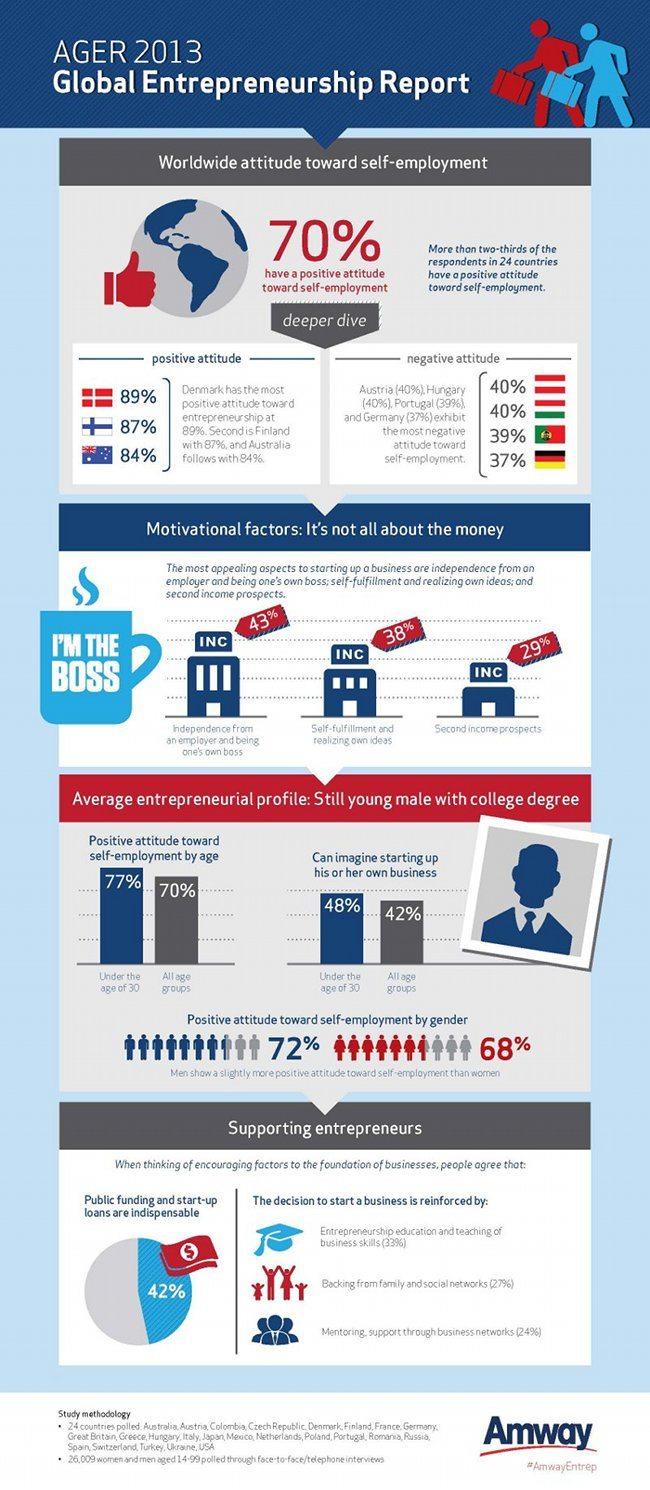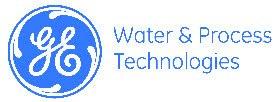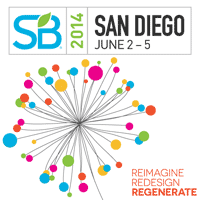The Quick & Dirty: You Can't Lead from the Middle


By Henk Campher
I know, it's been a while. Too many conferences and a book thrown in the mix too. Plug here - "Creating a Sustainable Brand." The good news is that enough has happened since my last post to write a whole series of Quick & Dirty's... This world of sustainability just doesn't let up. And while many business continue to inspire me, just as many continue to make me perspire.
Two articles that stood out tackled an issue that continues to baffle me -- the lack of true leadership amongst businesses. The first article tackled the lack of movement by companies on reporting on conflict minerals and the second dealt with how the lack of ethics can doom capitalism. Both of these highlights a common issue in the business world -- the lack of leadership and the impact on how society views business.
We've seen trust in business continue to drop radically. Businesses are blamed for every ill in the world -- from climate change; to corruption; to child labor; to chemicals in our food and clothes; to lack of transparency around GMOs and every other ingredient; to [fill in the blank]. Yes, it seems unfair that business gets targeted, but is it really that unfair? Do business show true leadership on these issues, or do they dance around the tough challenges?
Let's take climate change for example. If your business depends on cocoa, coffee, cotton, tea or any similar commodity, then your business is materially threatened by the current and future impact of climate change. Two-thirds of coffee will be wiped out by a 3 degrees Celsius rise, and new diseases, thanks to climate change, are already threatening the coffee in South America. It is great when companies speak out on climate change, but it is simply not good enough anymore. It is like speaking out against war but not being willing to speak out against the perpetrators. Business leaders must show they are lead-ers by speaking out against those who are fighting those trying to do something about climate change and speak out against those who are the major contributors to climate change.
Businesses have for too long huddled together and refused to speak out against other businesses. This laager mentality is of no use or benefit to society at all. Why should society trust you when you do not side with them but instead side with those who do not even have your interest at heart?
If you are in the coffee, cocoa, tea or cotton business, then you should publicly speak out against companies and individuals who support the Heartland Institute because they materially threaten your business. They have nothing in common with you except for a piece of paper that says you are more or less structured the same way because of legal requirements. I am legally structured the same way as bigots, racists and homophobes, but it will not prevent me from calling them out in public and speaking out. If business wants to be treated as a member of society then it needs to act in a way that shows it cares about society and shares the same values as society.
And your business is threatened by these businesses. They are actively working to hurt your business. It might not be their main goal, but the impact of their work is a direct threat to the ability of you to operate as a business in future. Businesses owe it to themselves, their consumers, their employees and, more importantly, their shareholders to speak out against any group or individual who threatens their business. So why so quiet on climate change?
Yes, BICEP is great and having progressive policies in place is a great start, but it is simply not good enough. What is needed is for business to stand up and to say, "Hey Mr. Koch, with due respect, you are not my friend. Your policies and actions are hurting my business, and you are therefore my enemy." Sounds like asking a lot, right? Not really. Shareholders expect business to stand up against those who threaten their business, but they seem to have a tough time when those people also call themselves business people.
The impact of this goes beyond shareholders though. Businesses cannot expect to be treated as a valuable member of society if they don't stand up for what is important to society. Most businesses want to stand somewhere in the middle between what is in the interest of society and what the extremists in business stand for -- climate change denial, executive pay disconnected from reality, against affordable healthcare for the masses, data hogging and privacy confusion, and every other issue where the interest of society is in contrast to the interest of a select group of businesses and/or individuals.
Sorry but you can't lead from the middle. If you want to be a business leader then you need to lead and speak out.
So when you fight reporting on conflict minerals or GMOs or chemicals or calories or sugar or whatever, then society will trust you less. When you stay quiet on executive pay or climate change or political funding or gay marriages, then they see you taking sides, and the side you picked wasn't theirs.
Look, I don't always know what is right or what is wrong. Take GMOs for example -- we are a long, long way from knowing what the positive or negative impact might be. The potential for it to do good in the world is enormous. I'm leaning towards being a supporter rather than a scaremonger as it is in my nature to be progressive -- emphasis on progress. However, what I do know is that people have the right to know what is in their products. That is what sustainability is all about -- brutal, honest transparency about how a product is made and the impact of that product: the good, the bad, the ugly and the unknown. I can't get around that.
No one said being in business is easy. It is even tougher to be a leader. Sometimes it demands taking action and speaking out on tough, tough issues. And the businesses who dare to speak out are the ones people love, support, protect, buy and defend because they believe that business is one of them. And we always speak out and act in favor of those we love and see as part of us. Question is: Do you?
Image credit: Flickr/hamed
A series of quick & dirty opinion pieces by Henk Campher. Senior Vice President, Business + Social Purpose and Managing Director of Sustainability at Edelman (www.edelman.com) out in the Wild West of San Francisco. Disrupter of purpose. Engineer of big ideas. Slayer of myths. Social media junkie - @angryafrican. He never wears ties. Ever. But always wears an accent with a strategy and opinion in his back pocket. Please note this series will not focus on individual companies and any reference is purely to provide color commentary. His new book, Creating a Sustainable Brand is available here.
Follow Henk Campher on Twitter.
Will New Yorkers Jump on Board as the City’s Compost Program Expands?


In the fall of 2012, New York City launched a pilot program to test out the curbside collection of organic waste – food scraps, food-soiled paper and yard waste – in its dense urban neighborhoods. The project – which included 30,000 households in the Bronx, Brooklyn and Staten Island, as well as over 100 schools and city buildings throughout the city – was much more successful than officials anticipated, and now the city is rolling out the curbside organics collection program to the rest of the Big Apple in phases. This spring, an additional 70,000 households in Queens and Brooklyn received new brown carts where residents can toss in fruit and vegetable trimmings, meat and bones, napkins, and even pizza boxes.
New York City sends about 3.2 million tons of waste to landfills each year, the New York Times reported, and spends around $350 million annually to haul trash as far away as South Carolina, according to Bloomberg Businessweek. By expanding the composting collection program citywide, officials hope to make a dent in that staggering statistic, estimating that organics make up approximately 30 percent of the city’s waste stream.
The city currently composts material collected from the pilot program at local and regional facilities, but in the future it plans to send the organic waste to a facility that will capture the methane released from the scraps and turn it into natural gas – enough to heat as many as 5,200 homes in Brooklyn, the New York Times reported. Power company National Grid expects to break ground on the new facility at the city’s largest wastewater treatment plant this summer.
Composting organic material from the nation’s largest city clearly has environmental and economic benefits, but will the program be successful? Despite the unexpected popularity of the pilot program, New Yorkers have been slow to increase their recycling efforts: Bloomberg Businessweek reported that recycling participation has stalled at 43 percent or less over the past several years, even with a city ordinance mandating recycling. Last year, New York issued 51,000 violations to the city’s recycling program for paper, plastics, glass and metals, according to Bloomberg. While New York City’s organics program is currently a voluntary initiative, it may become mandatory in the next few years.
New York Times reporter Vivian Yee visited Bay Ridge in Queens – a neighborhood recently included in the composting program – in late May and noticed that about one out of every three households had set out their new organics carts on garbage pickup day.
Reaction to the new brown organics carts has been mixed, Yee found: Residents who already considered themselves environmentalists – who drive a Prius or used to compost on their own – were excited about the new program and quick to adopt the system for separating their waste. Then there were the holdouts: individuals who are not willing to participate in the compost program or even the city’s conventional recycling program which was introduced in 1989.
Yee also met many New Yorkers who were skeptical of the program at first – worried about the stench, the extra work or even the bar code on the bin itself (might the city be tracking what she throws away, one woman wondered) – but overcame their concerns and eventually started tossing their apple cores and orange peels in the brown cart.
Melanie Nutter, director of San Francisco’s Department of the Environment, thinks that these initially hesitant individuals can be converted to composters over time. Writing for CNN, Nutter pointed out that San Francisco’s impressive 80 percent waste diversion rate and thriving composting program took years of hard work to achieve:
"Success does not happen overnight," Nutter wrote. "Behavior change is hard business. In San Francisco, when recycling and composting was mandated, we experienced some initial resistance because of the 'ick' factor: the idea that composting could be foul smelling and belongs on a farm, not in a city. Overcoming these misconceptions is as easy as reminding people that compostables have been in your kitchen trash can all along. Now, you are separating out your coffee grounds, food scraps, soiled paper and dead flowers and putting them toward a good cause."
New York City has a tough road ahead of it, but cities like San Francisco, Seattle and Austin have proven that citizens can get over the “yuck” factor and embrace composting as a way of life. Scott Lynch, writer for Gothamist and novice composter, summed it up best: “Overall, recycling your food waste isn't convenient or pleasant or fun, but like a lot of household chores it's mostly a matter of adopting a new routine, and then it just feels normal.”
Passionate about both writing and sustainability, Alexis Petru is freelance journalist based in the San Francisco Bay Area whose work has appeared on Earth911, Huffington Post and Patch.com. Prior to working as a writer, she coordinated environmental programs for Bay Area cities and counties. Connect with Alexis on Twitter at @alexispetru
A Guide to the Different Forms of Impact-Backed Finance


By Marta Maretich
Impact investors have put capital behind mission-driven finance providers since the earliest days of the social investing movement. Now the industry has grown and diversified to offer a wide range of finance provision models and approaches for investors to back.
Microcredit
Microcredit was one of the earliest forms of social impact finance and it remains one of the best known. The idea of lending as a way to improve the lot of the poor goes back to the origins of finance, but its modern version was crystallized in the '70s when early advocates like Muhammad Yunus began to experiment with using finance provision as a tool to lift communities out of poverty.
Microcredit involves making small loans available to poor people, especially those traditionally excluded from access to bank loans, through programmes designed to meet their particular needs and circumstances. Loans are usually small and short-term. Collateral is often replaced by a system of collective guarantee groups whose members are mutually responsible for ensuring that loans are repaid. Alternatively, borrowers may find one or two personal guarantors. Often these are respected local community leaders.
It is designed to give borrowers an alternative to traditional informal forms of credit such as moneylenders, pawnshops, loans from friends and relatives. Crucially, it’s designed to keep vulnerable borrowers out of the clutches of exploitative lenders, such as loan sharks.
In important ways, microcredit is the mother of the diversified social investing sector we see today. Many of today’s leading social investors, including Ashoka and Acción, cut their financial teeth on micro-lending -- using philanthropic money to establish lending programs as a way to further their social missions. Microlending sowed the seeds for what has become an explosion of social investing innovation as more and more organizations turn to finance provision as a way to extend their reach and multiply their impact.
Microfinance
The term microfinance can refer to a range of financial services including loans, credit, savings, insurance, money transfers, remittances and other financial products.
In the field of social investing, these services have traditionally been targeted at poor and low-income communities, often in emerging markets, with the aim of making them affordable for people who don’t have access to mainstream providers. Many microfinance institutions have developed their models to combine philanthropic support with finance, providing capacity building grants, training and market-building activities along with capital and credit.
According a recent GIIN/JP Morgan survey, this picture of microfinance is still fairly accurate, but it is changing fast. Increasingly, for-profit finance providers are entering the sector in places like India and sub-Saharan Africa and the practice of microfinance is being rolled out in to serve customers indeveloped countries, too. This suggests that the microfinance model is both flexible and sustainable, and that it can be adapted to encourage a variety of beneficial outcomes in many different contexts.
Microfinance is not without its critics. There are those who feel that it threatens traditional philanthropy and fails to recognize the complex causes of poverty. Recent years have seen cases of fraud in the microfinance world: in 2011 an international scandal in the Indian microfinance marketthreatened to discredit the burgeoning industry. All this has led to calls for better regulation by national governments and sparked efforts by the social investing sector to establish standards for responsible microfinance practice.
Nonetheless microfinance has seen a real boom in the years since early adopters began to branch out beyond microlending and there are signs the industry is maturing. The Microfinance Information Exchange (MIX), on online a platform, now collects and validates standard financial, operational, product, client and social performance data from institutions across the globe.
Meanwhile, microfinance continues to gain popularity and attract new players to the marketplace with commercial banks like Citi now getting involved. This makes sense, since some of social finance's greatest success stories are now coming out of the microfinance sector in the form of a string of profitable exits for impact investors like Bamboo Finance, Triodos and Lok Capital.
Growth finance
Just as microlending led to microfinance, microfinance has paved the way for what might be called growth finance. In growth finance, providers offer financial services resembling those available through mainstream financial providers to customers in underserved markets. For example they may make bigger, longer-term personal loans or provide commercial credit facilities to growing businesses. In each case, services are structured in a way that makes them accessible and affordable to the client base.
Growth finance recognizes the fact that certain market sectors, especially those in poor communities and emerging economies, still don’t have access to mainstream finance even when they rise above the rock-bottom base of the pyramid. While microfinance is well equipped to meet the needs of the very poor, growth finance offers a way to support individuals and communities as they increase in prosperity and build more robust economies.
Growth finance also offers a way to extend vital financial services to impact businesses as they scale up and face the challenges of what’s been identified as the “pioneer gap” — the tricky mid-stage of growth where philanthropic financial support dries up and mainstream support remains out of reach. Recognizing this, many active microfinance institutions are extending their services to offer growth finance options to their markets. For example, seasoned social lender Root Capital is now preparing to offer more loans as well as larger, longer-term loans and other services to meet the changing needs of their rural client base.
The goal of impact is, of course, to build businesses and markets that are robust enough to one day attract finance from mainstream providers. Recent exits offer some evidence that this is already happening: Leapfrog, an impact investor in financial services companies in Africa, recently sold its stake in the Ghanaian company Express Life to FTSE 100 company Prudential.
This exit is another promising sign that the impact model can deliver, yet there is still much work to be done before all global markets have access to finance through mainstream providers—and some may never get there. For this reason, impact investors continue to play a key role in capitalizing businesses that offer the right kind of financial services for developing markets and underserved communities. But what does the future hold for impact investing in financial service providers?
To find out, see part three of this series: The Future of Investable Social Finance. Or read part one, Why Finance is (And Always Has Been) an Important Sector for Impact Investing.
Browse financial sector impact deals.
Image credit: siwasasil / 123RF Stock Photo
About the author: Marta Maretich writes about impact, sustainable and social investing for Maximpact.com, a deal listing portal and information hub for the new finance sector. She is Chief Editor of the Maximpact blog.
About Maximpact: Maximpact is a free global portal for the social, impact and sustainability sectors. It operates as a secure web-based listing service that allows sustainability, philanthropy and CSR professionals, as well as entrepreneurs, intermediaries, and funds to share information about initiatives and impact investment deals, online. For more information on the platform or to review latest impact projects visit: www.maximpact.com. This article first appeared on Maximpact’s blog.
Rising CO2 Levels Will Lead To Dietary Deficiencies, Israeli University Warns


Editor's Note: A version of this post originally appeared on NoCamels – Israeli Innovation News
By Rachel Dinh
While many of the world’s politicians debate whether or not the effects of climate change are real, scientists in Israel are making discoveries that clearly point to their worrisome omens for the not-so-distant future.
Crops that provide a large share of the global population with most of their dietary zinc and iron will have significantly reduced concentrations of those nutrients at the elevated levels of carbon dioxide (CO2) anticipated by around 2050, according to researchers at Ben-Gurion University in the Negev in southern Israel. Given that an estimated 2 billion people suffer from zinc and iron deficiencies, resulting in a loss of 63 million life years annually from malnutrition, the reduction in these nutrients represents the most significant health threat ever to be associated with climate change.
Previous studies of crops grown in greenhouses and chambers at elevated CO2 had found nutrient reductions, but those studies were criticized for using artificial growing conditions. Experiments using free air carbon dioxide enrichment (FACE) technology have subsequently become the standard since FACE allows plants to be grown in open fields at elevated levels of CO2. However, even prior studies using FACE had small sample sizes and have been inconclusive.
Dr. Itai Kloog of the Department of Geography and Environmental Development at Ben-Gurion and his colleagues analyzed data involving 41 cultivars of grains and legumes from seven different FACE locations in Japan, Australia and the United States. They tested the nutrient concentrations of the edible portions of wheat, rice, maize, sorghum, soybeans and field peas.
The results showed a significant decrease in the concentrations of zinc, iron and protein in wheat and rice. For example, zinc, iron and protein concentrations in wheat grains grown at the FACE sites were reduced by as much as 9.3 percent, 5.1 percent and 6.3 percent respectively, compared with wheat grown at normal CO2 levels. Nutritional zinc and iron levels were also significantly reduced in legumes. The team published their findings in last month’s issue of Nature magazine.
Discovering the future of global nutrition
The finding that these grains and legumes lost these nutrients at elevated CO2 is, of course, tremendously significant for the future of global food consumption.
It is estimated that 2 billion to 3 billion people around the world receive 70 percent or more of their dietary zinc and/or iron from these crops, particularly in the developing world, where zinc and iron deficiency is already a major health concern. With CO2 levels predicted to reach the elevated levels used in the experiment by 2050, the global health implications are alarming. However, one surprising finding may offer hope for mitigation. Kloog’s team found that zinc and iron varied substantially across cultivars of rice. According to the researchers, this discovery suggests that there could be an opportunity to breed reduced sensitivity to the effect of elevated CO2 into crops in the future.
Image credit: Broin
Entrepreneurship: A Risky Economic Pillar or an Economic Pillar at Risk?


By Jesse Hertstein
Amway Chairman Steve Van Andel recently shared a story about a trip he took to Mexico. There, a woman greeted him in a very memorable way. She kept saying something in Spanish – a phrase he hadn’t heard before – and then pointed to her bright yellow dress. She repeated the action several times, almost frantically, until the interpreter made his way through the crowd.
The woman was trying to say, “This is the first new dress I’ve ever owned, and it’s because I now own my own business. Thank you.”
Her conviction. Her story. Her. All of this is not a piece of folklore. It’s a microcosm of something we hold dear at Amway: that spreading the entrepreneurial spirit and giving others a chance they may not have otherwise, makes all the difference. For this woman, and for many, one chance is all it takes.
So why don’t more people strike off on their own, or start a business through with an established direct selling model like Amway?
Three years ago, Amway leaders in Germany and academics at the University of Munich Centre for Entrepreneurship began to think about this question. Their discussions led a formal survey, and an academic study called the Amway European Entrepreneurship Report. The goals were simple:
- Facilitate discussion about overcoming challenges all entrepreneurs, or would-be entrepreneurs, face and what brings their ideas and plans to a halt
- Provide fodder for thought-provoking socio-political debate about what can be done to spark entrepreneurship during times of economic crises
- Bring legislative bodies, educational institutions and media together to set an agenda that fosters global entrepreneurship of all kinds
The research both affirmed our concerns of a “gap” between those who could see themselves starting a business, and those who actually did. It also provided insights on some of the fears that kept people from setting off on a new venture.
The gap was around 31 percent globally, but varied somewhat across countries. This set off a series of news articles and public policy forums to better understand the findings. But was this just reflective of European economies and cultures? To really understand the issue, we had to take the research global.
In 2013, we worked with universities in the United States, Japan, Australia, Colombia and Mexico. The first Amway Global Entrepreneurship Report not only echoed the European research, it revealed some incredible insights related to the “fear of failure” of would-be entrepreneurs.
Of the 26,000 people we surveyed, 70 percent cited fear of failure as the biggest obstacle they faced in starting their own businesses. Some feared financial burdens (up to and including bankruptcy), which did not surprise us.
Still, many others feared that failure would have social and psychological consequences, such as loss of self-esteem or declining respect from peers. In the United States, we have a high tolerance for failure, and in fact, we see it simply as a step in most people’s journeys.
It’s easy to find out how many times Thomas Edison, Steven Spielberg or Colonel Sanders failed. However, in many other countries, this acceptance is scarcer, so we’re asking ourselves: How do we export that tolerance if we truly believe (and Amway does believe) that it’s a mindset that needs to exist for entrepreneurship to thrive?
When thinking of factors to encourage entrepreneurship and the foundation of businesses, respondents stated that professional support is fundamental. For example, established and successful entrepreneurs may function as role models for potential and new entrepreneurs. Through mentoring programs and business networks, potential and existing entrepreneurs may obtain crucial first-hand information on the startup phase.
We have not answered all of our questions, or found all of the solutions. But the journey is helping to create new conversations about the role of entrepreneurship in our changing world.
The research is now being discussed by everyone from the World Federation of Direct Selling Associations, to the U.S. Chamber of Commerce, to Cosmo Magazine, as well as with media and policy makers in countries around the world.
In 2014, the study will take place in 38 countries, and results will be shared during Global Entrepreneurship Week in November.
The biggest question is one that will not be answered by us, but by people like the woman in Mexico: Will the future be an uncertain cloud, or like a yellow dress, as bright as the sun?
Images courtesy of Amway Corporation
Jesse Hertstein is Corporate Social Responsibility Lead at Amway, and author of the Amway One by One Campaign for Children blog, which provides thought leadership around grassroots cause activation and captures stories of successful partnerships around the world. He has traveled extensively documenting Amway CSR programs, and serves as a leader in his own community around issues of literacy.
Interview: Heiner Markhoff, President and CEO of GE Water


TriplePundit reported live from the Fortune Brainstorm Green 2014 conference in Laguna Niguel, CA. Follow along on this page for ongoing video interviews with sustainability thought leaders, corporate change agents and entrepreneurs who are leading the way to a more sustainable future.
I had a chance to talk to Heiner Markoff about sustainability in the water sector and the role GE Water plans in ensuring a steady supply of fresh, clean water to the world.
‘Two ticks’ symbol not living up to disability promise


Thousands of firms awarded the UK Government’s ‘two ticks’ symbol for ensuring equality for disabled workers have been found to be no better than companies who have not achieved it.
Researchers say the ‘two ticks positive about disability’ symbol, which is awarded by the Department for Work and Pensions’ Jobcentre Plus to help job applicants identify organisations committed to helping disabled workers, is nothing more than an “empty shell” used by companies as PR and “impression management” rather than a true commitment to equal rights for disability workers.
The research led by Kim Hoque, of Warwick Business School, and Nick Bacon, of Cass Business School, found that just 15% of organisations awarded the two ticks symbol adhered to all five of its commitments, with 18% of those signed up not fulfilling any of them, with most – 38%– only keeping one of the promises.
Professor Hoque said: “We found there was no difference in the support and commitment to disabled workers between companies who had the two ticks symbol and those who did not have it. We also found no difference between the public and private sector, if anything the opposite was true.
“It suggests that the symbol may often comprise little more than an ‘empty shell’, where employers display the two ticks for impression management purposes to take advantage of its potential reputational benefits rather than because of a genuine concern for disability issues.
“The Government is aiming to reduce the number of disability benefit claimants by moving one million of them into employment. These plans are dependent upon employers being receptive to taking on disabled people in larger numbers, but our research has shown that the widespread adoption of the two ticks symbol is not indicative of this happening.”
Research has found disabled people are almost twice as likely to be unemployed with a 2012 Labour Force Survey finding the unemployment rate for disabled people and those with long term health problems at 49%. Those in work are paid significantly less, experience disadvantage in career progression and access to training, with disabled people over-represented in low skilled and low status jobs, according to research.
Picture credit: © Blanscape | Dreamstime.com
3p Weekend: Trending Topics from SB'14 San Diego


Triple Pundit spent the week at the 2014 Sustainable Brands conference in San Diego, which gathered some of the most influential companies, organizations and thought leaders in the sustainability space.
We gathered five of the top trending topics from the event for a quick weekend read. Stay tuned for more coverage all week!
1. Turning the mega challenges into prosperity
Resilience to climate change and resource constraints was a hot topic at SB'14. Talks often centered around how a company can turn its approach to these pressing mega challenges into brand value and bottom line returns.
PwC and author, speaker and environmental strategy consultant Andrew Winston led a panel on ‘building good growth’ in a brand by using cutting edge techniques to turn challenges into value. Andy Savitz, author of "Talent, Transformation and the Triple Bottom Line," examined how sustainability programs can help companies attract and retain top talent, while others explored how things like biomimicry and the sharing economy can teach big business a lesson about turning challenge into change.
2. Shared value driving tangible change
Shared value – the approach that business can profit by doing good for society – was also tough to miss this week. Representatives from two carpet manufacturers -- Desso from the Netherlands and Shaw Industries from the U.S. -- spoke about how creating cradle-to-cradle solutions for their products boosted bottom lines while helping communities around the world reduce landfill waste.In a slightly different approach, Coca-Cola provides access to clean water, energy and information in off-grid locations around the world through its EKOCENTER program, while Ford uses its vehicles to help remote communities in India provide prenatal care.
3. Brand authenticity: From storytelling to story-doing
Talking the talk is one thing, but SB'14 was all about walking the walk. What author Ty Montague and other speakers called "story-doing," taking the extra step from reporting on achievements to integrating sustainability into every step, was a subject that earned some well deserved time in the spotlight.
4. Health and wellness in business
As part of the events at SB'14, attendees were invited to boost well-being at daily paddleboard yoga sessions, but that wasn't the only time health and wellness came up. Eileen Howard Boone, SVP of corporate social responsibility and philanthropy at CVS, led a discussion on the company's bold decision to stop selling cigarettes, even if it meant giving up $2 billion in annual revenue.
Jo Confino of the Guardian and Pamela Wilhelms of Wilhelms Consulting Group led a chat on spiritual narratives, while Brand Cool CEO Sue Kochan, a Buddhist teacher, explored how mindfulness and ancient training can actually make us better change agents.
5. Reimagining materials
From the value of a closed loop textile recycling system and designing with a product's whole lifecycle in mind to the city of Phoenix and Arizona State University's plan to build a sustainable future for the city centered around waste management, re-imagingin commonly used materials was a topic that took center stage.
What were some of your favorite take-aways from SB'14? Tell us about them in the comments section and on social media!
Image courtesy of Sustainable Brands
Based in Philadelphia, Mary Mazzoni is a senior editor at TriplePundit. She is also a freelance journalist who frequently writes about sustainability, corporate social responsibility and clean tech. Her work has appeared in the Philadelphia Daily News, the Huffington Post, Sustainable Brands, Earth911 and the Daily Meal. You can follow her on Twitter @mary_mazzoni.
Interview: Patagonia's Rick Ridgeway on Sustainable Apparel
In this interview at the Fortune Brainstorm Green 2014 conference, Patagonia's Rick Ridgeway talks to Nick Aster about the state of the apparel industry and sustainability.
Image credit: Yukiko Matsuoka/Flickr
Siemens Report Lays Out Opportunities for Cities to Leverage Technology and Build Infrastructure Value


Ed note: This article is part of a short series on financing smart city infrastructure, sponsored by Siemens. Please join us for a live Google Hangout with Siemens, PwC and Berwin Leighton Paisner on June 12 at 10 a.m. PT/1 p.m. ET, where we’ll talk about this issue live!
If you were to watch a time lapse video of the history of human civilization, you would see something like this: Small bands of humans moved from hunting to agriculture, consolidating, and then developing all kinds of technology at a gradually increasing rate. Improved food security led to rising population levels which, in turn, led to more innovation. All of this is punctuated by numerous wars.
In more recent times there has been a massive migration into cities, leading to highly concentrated metropolises. If you were to look closely, you would also see a redistribution of power and resources. Where it was once almost exclusively held by ruling classes and governments, it is now being increasingly shared with businesses and an investor class. Now we find ourselves with resource scarcity, a disrupted climate and cities looking to find a way to manage their swelling ranks at a time of receding government support.
A new report, entitled Investor Ready Cities, jointly produced by tech conglomerate Siemens, consultancy PwC and law firm Berwin, Leighton & Paisner, looks unblinkingly at these trends and proposes a way forward through increased collaboration between cities, businesses and investors.
The main thrust of their argument centers on the notion of infrastructure value. It first challenges and then provides guidance to city officials to develop the “legal and governance structures that need to be in place to provide the necessary security and certainty to the investment community that will encourage them to invest in infrastructure projects.”
This is because, "Cities with the appropriate foundations of institutional stability can leverage financial mechanisms to their advantage to help deliver the infrastructure that is so critical to their future.”
This public-private partnership approach is a compelling path forward in today’s world, addressing the simultaneous challenges of:
- Aging demographics requiring and benefiting from costly health care
- Populations that are growing, causing crowding and rising costs -- or in some cases shrinking and leading to collapsing housing markets and lost tax revenues
- Industrial presence that is, in some cases, growing and causing pollution, while in other cases withdrawing leading to significant job and tax revenue losses
- Catastrophic weather events exposing the inherent fragility of many infrastructure systems including energy, transportation, water and food distribution
All this is happening at a time when government budgets are under pressure -- and private money has sought safety on the sidelines -- while at the same time new wireless communication, energy, sensing and computing technologies are providing unprecedented opportunities.
The report lays out a number of ways forward, citing numerous case studies, towards:
- A fast and efficient transport and mobility infrastructure with sufficient capacity to cater for growing and changing populations
- A robust and reliable energy infrastructure providing power to meet the most critical needs
- A clean and plentiful water supply
- Sanitation to deliver modern standards of hygiene efficiently and sustainably
- A safe and secure environment in which people can live and work with confidence.
Getting there requires cities to develop strong leadership and in the process, to learn to speak the language of business. Doing so will provide tremendous collaborative opportunities to help them serve their citizenry in a highly effective manner -- turning these multiple challenges into a positive disruption that can, if done properly, be synthesized in a higher quality of life for everyone involved.
Join Triple Pundit for a live Google Hangout with Siemens, PwC and Berwin Leighton Paisner on June 12 at 10 a.m. PT/1 p.m. ET, where we’ll talk about how to finance cities of the future.
Image courtesy of Siemens
RP Siegel, PE, is an inventor, consultant and freelance author. He writes for numerous publications including Triple Pundit, Justmeans, ThomasNet, Huffington Post, and Energy Viewpoints. He and Roger Saillant co-wrote the eco-thriller Vapor Trails. He sees it as his mission to help articulate and clarify the problems and challenges confronting our planet at this time, as well as the steadily emerging list of proposed solutions. His combined engineering and humanities background help to bring both global perspective and analytical detail to bear on the questions at hand.
Follow RP Siegel on Twitter.